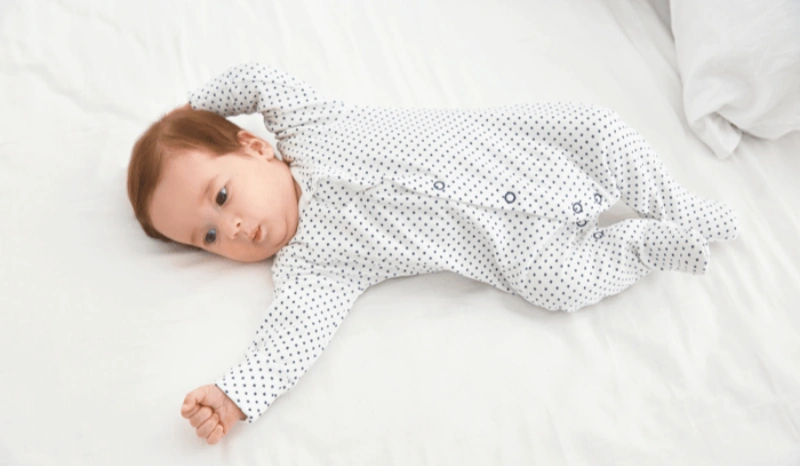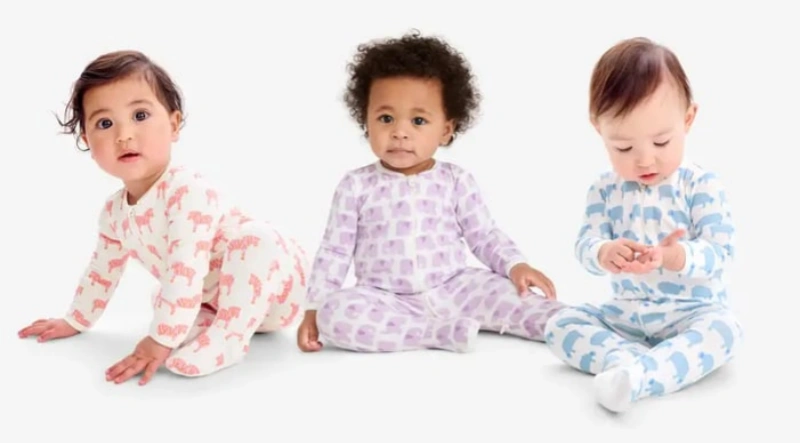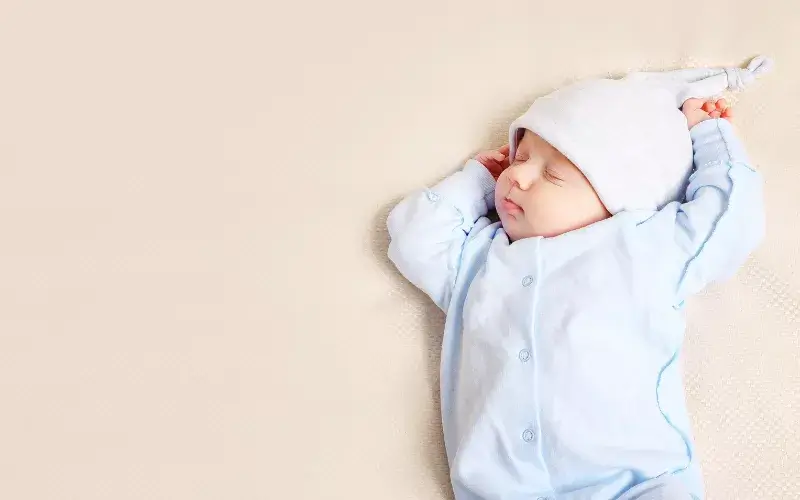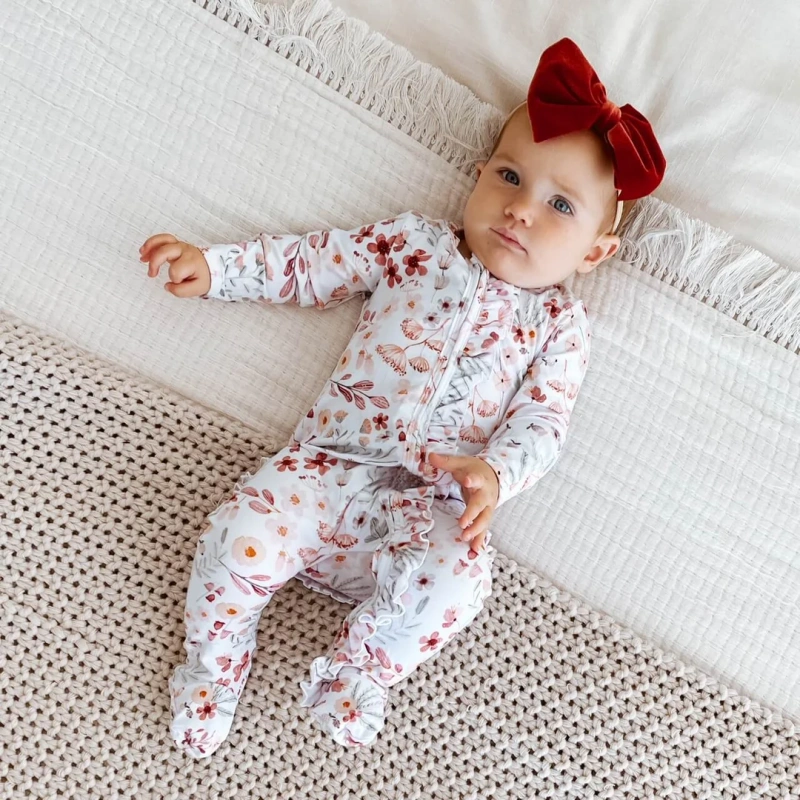When you’re preparing for your newborn’s arrival, one of the many questions you’ll ask is, “How many newborn pajamas do I need?” As parents, we want to ensure that our babies stay comfy and cozy while they sleep, but it can be tough to know just how many sleepwear options to buy.
Every newborn is different, and their sleep needs vary, but understanding the essentials can help you prepare better for those first few weeks.
In this ultimate guide, we’ll break down exactly how many newborn pajamas you’ll need, what to look for in fabric and design, and how to avoid overbuying or understocking. We’ll help you make informed choices, ensuring your little one gets the best sleep. If you’re wondering what’s essential and how to plan for those early days, this guide has you covered.
What Are Newborn Pajamas?

Newborn pajamas are special clothes made for sleeping. They come in different styles like onesies, sleepers, and two-piece sets. Onesies are a one-piece outfit that covers your baby’s body and snaps at the bottom for easy diaper changes.
Sleepers cover your baby from head to toe, sometimes with built-in feet to keep tiny toes warm. These pajamas keep your baby comfortable and cozy while they sleep, and they make late-night diaper changes easier for parents.
Pajamas vs Regular Clothing
Newborn pajamas are different from regular clothes. Regular clothes may not be as soft or stretchy as pajamas. Pajamas are made to fit snugly, so your baby feels secure and warm without being uncomfortable.
They are designed for easy access, making it simpler to change diapers without taking off the entire outfit. Unlike regular clothes, newborn pajamas focus on comfort, warmth, and convenience for both baby and parent.
Factors to Consider When Deciding How Many Pajamas for Newborn
Baby’s Growth and Development
Newborns grow fast, which means their clothing sizes change quickly. At first, your baby may outgrow their pajamas in just a few weeks. It’s important to keep this in mind when deciding how many pajamas to buy. You don’t want to buy too many in a single size because your baby may grow out of them before they get much use.
Sizing flexibility is key. Look for pajamas that can stretch or grow with your baby. Pajamas with adjustable features like snap buttons or stretchy fabrics can help. These pajamas will last longer and ensure a comfortable fit as your baby grows. Consider buying a range of sizes to keep up with your baby’s growth.
Laundry Frequency
How often you do laundry will play a big role in deciding how many pajamas you need. If you plan to do laundry every day or two, you won’t need as many pajamas on hand. However, if you prefer to do laundry less frequently, stock up on more pajamas to avoid running out. Having enough sleepwear ensures you won’t need to do laundry constantly.
Busy schedules also impact pajama needs. Some days, it might be hard to find time to wash and dry clothes. In these cases, having extra pajamas on hand ensures your baby always has a clean pair to wear. Keep a balance between what you need and what’s realistic for your schedule.
Weather and Seasons
The weather and seasons will affect how many pajamas you need. During colder months, your baby will need more layers. Warm footed pajamas, sleepers, or onesies with extra fabric will help keep them warm through chilly nights. On warmer days, you might want lightweight, breathable fabrics like cotton to keep your baby cool.
Layering is important for changing weather. In cooler months, consider adding light blankets or sleep sacks over your baby’s pajamas to keep them cozy. During warmer months, thinner fabrics and breathable designs will prevent overheating. Adjust your pajama selection based on the season and weather forecast.
Nighttime Sleep Patterns
How often your newborn sleeps will influence pajama needs. Newborns sleep a lot, often 16-18 hours a day, so they go through a lot of pajamas. In the early days, you may need to change them frequently due to accidents or spit-ups. Pajamas with easy snap closures or zippers are best for quick changes during these sleepy nights.
Overnight leaks or spit-ups are common, so plan for pajama changes at least once a night. Depending on your baby’s nighttime habits, you may need to change pajamas a few times each night. This means having several sets of pajamas available will make things easier, especially during those first few weeks when your baby needs frequent changes.
How Many Newborn Pajamas Do I Need?

Recommended Pajama Quantities
For the First Few Weeks:
In the first few weeks, aim to have around 6-8 pajamas for your newborn. This gives you enough to rotate between washes without worrying about running out. Focus on comfort and ease of use with features like snap closures or zippers that make late-night changes quicker and easier. Soft, stretchy fabrics like cotton will keep your baby comfortable while they sleep.
Growing Baby Considerations:
As your baby grows, plan for growth spurts and changing sizes. After the first few weeks, your baby will quickly move into a larger size. It’s a good idea to have a few pajamas in the next size up, ready to go. Watch for signs that your baby has outgrown their current pajamas, like tightness around the chest or legs, and make the switch when necessary.
Specific Newborn Pajama Types
Footed Pajamas:
Footed pajamas are a must-have for your newborn. They keep your baby’s feet warm and eliminate the need for socks, making them perfect for cold nights. Footed pajamas also offer full-body coverage, which is great for added warmth. You should have around 4-6 pairs to rotate through, ensuring your baby stays cozy while they sleep without running out of clean options.
Sleepers with Zippers vs Snap Closures:
Sleepers with zippers are easy to use for quick diaper changes. You simply unzip the bottom half, and you’re done. They’re especially convenient at night. Snap closure sleepers take a bit more time to change, but they fit snugly and offer a secure option. It’s a good idea to have 3-4 zippered sleepers and 2-3 with snap closures so you have both options for different needs.
Onesies as Pajamas:
Onesies are a great choice for warmer months or daytime naps. They’re simple, easy to put on, and perfect for diaper changes. While they may not be warm enough for overnight use unless layered, they work well during the day or when the temperature is higher. Having about 4-6 onesies is ideal, especially if you plan to use them for napping or lounging.
Separate Pajama Tops and Bottoms:
Separate pajama tops and bottoms are not essential for newborns. One-piece pajamas are often easier to manage and keep your baby comfortable. If you prefer separates, limit them to 2-3 sets, as they can be harder to change quickly, especially during late-night wake-ups. For most parents, one-piece sleepers or onesies are the go-to options.
Tips for Choosing the Best Pajamas for Your Newborn

Fabric Choices
When choosing pajamas for your newborn, soft cotton and organic cotton are excellent options. These fabrics are gentle on your baby’s delicate skin, preventing irritation or discomfort.
Cotton is also breathable, allowing your baby to stay cool in warm weather and warm in cooler temperatures. Look for fabrics that are lightweight yet durable, as breathable materials ensure a comfortable night’s sleep without overheating.
Fit and Comfort
Fit and comfort are essential when selecting newborn pajamas. Stretchy fabrics that move with your baby’s body help avoid irritation and allow for natural movement. Soft, well-fitting pajamas provide the right balance of snugness without being too tight or too loose.
The perfect fit ensures your baby feels secure and cozy, helping them sleep peacefully. Comfort-focused designs allow easy movement during sleep and play.
Ease of Use for Parents
Look for pajamas with zippers if you want a faster, more convenient option for diaper changes. Zippers allow you to quickly open the bottom half of the pajamas without disturbing your baby’s sleep.
Snaps may take a little more time, but they can offer a secure fit. Footed pajamas provide extra warmth and keep your baby’s feet cozy, while footless options offer more flexibility for warmer weather or easy changes.
Safety Features
Always check for safety features when choosing newborn pajamas. Avoid pajamas with loose threads, tags, or small parts that could be a choking hazard. Make sure the seams are well-stitched to prevent any rough spots that could irritate your baby’s skin.
Flame-retardant pajamas are a good option for safety, but if you prefer natural alternatives, look for organic fabrics free from harmful chemicals that could irritate your baby’s sensitive skin.
Budgeting for Newborn Pajamas
Balancing Cost and Quality
When budgeting for newborn pajamas, it’s important to balance cost and quality. Higher-quality pajamas made from soft, breathable fabrics may cost more, but they offer better comfort and durability.
Affordable options are great for growing babies, but make sure they still provide the softness and flexibility your newborn needs. Look for well-made pajamas that are gentle on your baby’s skin without compromising on quality.
When to Buy New Pajamas
Plan your pajama purchases based on your baby’s growth stages. Newborns grow quickly, so buying pajamas in multiple sizes is a smart move. Purchase pajamas for each growth stage, but avoid buying too many in one size. Keep an eye out for sales and discounts to save money on high-quality pajamas. Shopping smart ensures you get the best value for your budget while keeping your baby comfortable.
Common Pajama Buying Mistakes to Avoid
Overbuying Pajamas
You don’t need too many newborn pajamas. Buying in excess can lead to waste as babies grow quickly. Having 6-8 pajamas is usually enough for the first few months. This way, you won’t be overwhelmed with too many clothes that your baby will soon outgrow, and you’ll avoid clutter.
Choosing the Wrong Size
Picking the right size for your newborn is essential for comfort. Choose pajamas that fit your baby’s current size, not too big or too small. In the first few months, newborns grow fast, so having a few different sizes is helpful. Look for pajamas with a bit of stretch to last through growth spurts.
Ignoring Practicality
Comfort and ease of changing are key when buying newborn pajamas. Consider options with zippers or snaps for easy diaper changes, especially during the night. Soft, stretchy fabrics make dressing and undressing easier. Practical, well-designed pajamas save time and keep your baby comfy.
Not Considering Seasonal Needs
Newborns need different sleepwear depending on the season. In colder months, choose warmer pajamas like footed sleepers. For warmer weather, opt for lightweight, breathable fabrics like cotton. Having the right sleepwear for the season ensures your baby stays comfortable and cozy all year round.
Conclusion
Now, you know how many newborn pajamas you need. Around 6-8 pieces are enough to keep your baby comfortable while ensuring you have clean options. Prioritize soft, breathable fabrics and easy-to-use designs. Focus on practicality, comfort, and safety over quantity. Choose pajamas that fit well and suit your baby’s needs as they grow.
If you are looking for high-quality newborn pajamas, get your quote for kids pajamas from Friendtex now!


